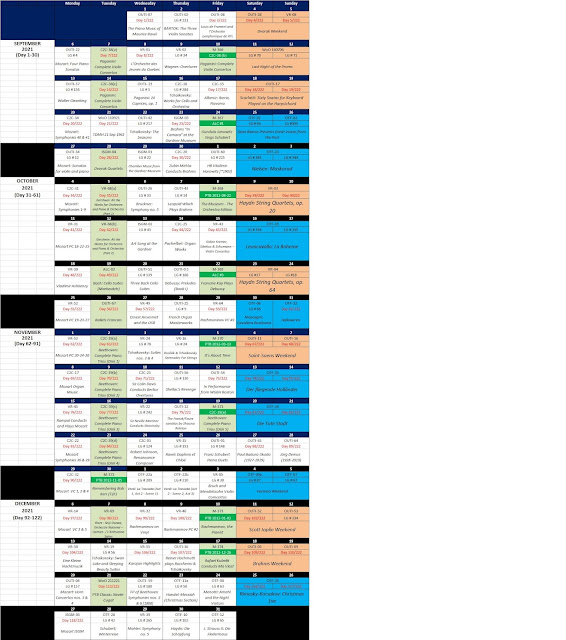| No. 365of the ongoing ITYWLTMT series of audio montages is this week's Tuesday Blog. It can be found in our archives at https://archive.org/details/pcast365 |
=====================================================================
Today’s
“Fifth Tuesday” montage marks a number if milestones:
- it
is our 365th montage in our ongoing series,
- it marks the end of a year-long survey of all of our montages in
this series and
- serves
as a launch point for a new programming arc dedicated to revisiting our
many contributions to TalkClassical through our Tuesday Blog, which
marked its tenth anniversary a few months ago.
For the
next few months, our montages will take a fresh look at some themes we explored
on the Tuesday Blog over the years, and today’s montage gets the ball
rolling with a look back at one of our earliest musings.
In June of2011, we posted some thoughts on the late great Canadian pianist Glenn Gould
and his four commercially available performances of Bach’s Goldberg
Variations. In a post from 2014, we marked the sixtieth anniversary of his
CBC broadcast performance of that work (one of those four recordings) and
today’s montage packages his two “studio” versions – his 1955 “Mono” version
and the 1981 “Digital” version, marking the alpha and omega of his great career
as a recording artist. (For the record, we posted in our “Canada Day” montage
of 2011 selections from the fourth recording, that one a recital performance
from the Salzburg festival.)
To mark
milestones of these seminal recording releases – and by so doing anniversaries
of Gould’s passing – Sony provided a number of “remastered” releases of this
same tandem set. Our montage today features a copy of the 1955 version
originally downloaded from the old Japanese Public Domain Classic site,
and the original CD release from my own collection.
As we have
written many times in these pages, to some Gould is an “acquired taste”…
However, it is very interesting to compare the two performances, one by a young
maverick making a splashy entry into the music scene, who “attacks” each
variation with a combination of assuredness, aplomb and much temerity and the
other, an older, more measured (and temperamental) pianist, a master of the
recording studio striving for the “perfect rendition”, very deliberate and
somewhat aseptic in his approach.
I’d argue
where the 1955 version has more appeal and more “pizzazz” (though I never think
of Gould as a “showman” pianist), the 1981 interpretation is a lot more
personal, more like ”I’ve played this piece a zillion times, and this is my
considered opinion of how Bach would have wanted each variation to be played”.
Since we shared parts of his Richard Strauss recording – which I believe was
his last as a pianist – Gould only recorded stuff near the end that really
cranked his chain, so even these variations that are inexorably linked to him
get the same treatment - “unique and special experiences”, to be cherished in
the same way he made them, a craftsman above all else.
I think you
will love this music too




